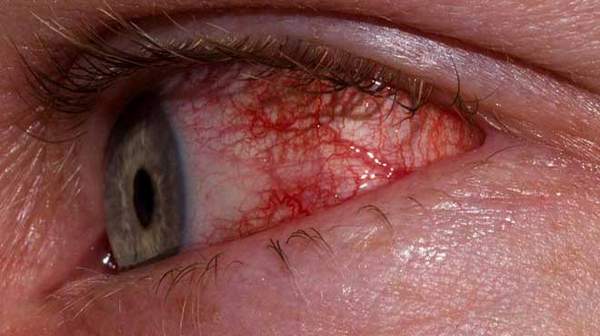What's in this article?
What is Allergic Conjunctivitis?
When your eyes are exposed to substances like pollen or mold spores, they may become red, itchy, and watery. These symptoms mean you have allergic conjunctivitis. Allergic conjunctivitis refers to eye inflammation resulting from an allergic reaction to substances like pollen or mold spores.
The inside of your eyelids and the covering of your eyeball have a membrane called the conjunctiva. The conjunctiva is susceptible to irritation from allergens, especially during hay fever season. Allergic conjunctivitus is quite common and affects about one-fifth of the population. It is your body’s reaction to substances it considers potentially harmful.
What Causes Allergic Conjunctivitis?
Infection is the most common cause of conjunctivitis and, in addition to itch, redness and grittiness, there is usually a sticky discharge. Many bacteria and viruses can cause conjunctivitis.
When your eyes are exposed to allergy-causing substances, a substance called histamine is released by your body. The blood vessels in the conjunctiva become swollen. The eyes can become red, itchy, and teary very quickly.
The pollens that cause symptoms vary from person to person and from area to area. Tiny, hard-to-see pollens that may cause hay fever include grasses, ragweed and trees.
Your symptoms may be worse when there is more pollen in the air. Higher levels of pollen are more likely on hot, dry, windy days. On cool, damp, rainy days most pollen is washed to the ground.
Allergies tend to run in families. It is hard to know exactly how many people have allergies. Many conditions are often lumped under the term “allergy” even when they might not truly be an allergy.
What Are the Symptoms of Allergic Pink Eye?
Symptoms of allergic pink eye include:
- Redness in the white of the eye or inner eyelid
- Increased amount of tears
- Itchy eyes
- Blurred vision
- Swelling of the eyelid
In allergic conjunctivitis, these symptoms are usually present in both eyes (not always equally).
See your ophthalmologist (a doctor and surgeon who is trained to treat eye conditions), optometrist (doctor trained to treat eye conditions), or family doctor if you have any of these persistent symptoms.
Types of Allergic Conjunctivitis
Allergic conjunctivitis is usually broken down into different categories. Below are some of them:
1) Seasonal allergic conjunctivitis (allergic rhinoconjunctivitis)
Pollen is the most common allergen to cause conjunctivitis in countries that have cold winters (not near the equator).
If you get conjunctivitis from pollen you will probably have symptoms of hay fever, which includes sneezing, blocked or runny nose, itchy nose, and itchy and watery eyes. When the conjunctivitis occurs along with sneezing and blocked nose, etc., the whole thing is calledhay fever.
This type of conjunctivitis is called seasonal allergic conjunctivitis (allergic rhinoconjunctivitis) because it almost exclusively occurs during the spring and summer months when plants, especially grass, trees, and flowers are in pollen. Some people even have symptoms during early autumn (fall).
2) Contact conjunctivitis (Contact dermatoconjunctivtis)
These are usually caused by make-up (cosmetics), eye-drops or other chemical which irritate the conjunctiva of sensitive people, causing an allergic response. Some people are sensitive to specific substances.
Symptoms usually develop two to four days after the substance comes into contact with the eyes.
3) Giant papillary conjunctivitis
This is generally caused by contact lenses. When sensitive people put the contacted lenses on they cause discomfort – this can get progressively worse and more and more uncomfortable, causing the eyes to become red.
Giant papillary conjunctivitis (GPC) may also occur after eye surgery when the patient uses hard contact lenses.
Some people say that poor hygiene when handling contact lenses, solutions and cases may contribute to infections of the eye.
How Allergic Conjunctivitis be Treated?
Home Care
Treating allergic conjunctivitis at home involves a combination of prevention strategies and activities to ease your symptoms. To minimize your exposure to allergens:
- close windows when the pollen count is high
- keep your home dust-free
- use an indoor air purifier
- avoid exposure to harsh chemicals, dyes, and perfumes
To ease your symptoms, avoid rubbing your eyes. Applying a cool compress to your eyes can also help reduce inflammation and itching.
Medications
In more troublesome cases, home care may not be adequate. You will need to see a doctor who might recommend:
- an oral or over-the-counter antihistamine to reduce or block histamine release
- anti-inflammatory and/or anti-inflammation eye drops
- eye drops to shrink congested blood vessels
- steroid eye drops (only in severe cases)





